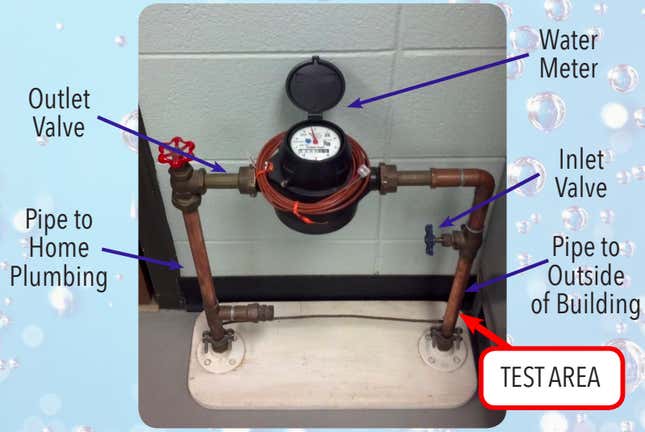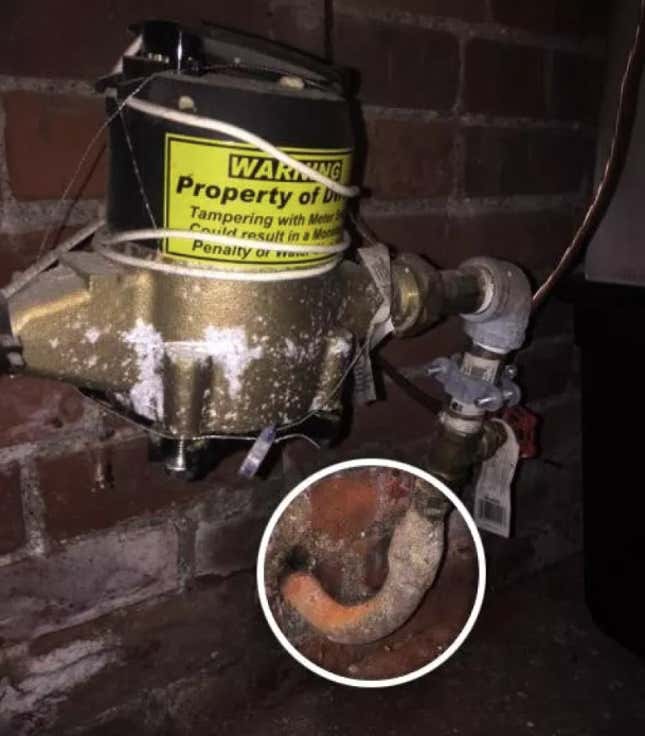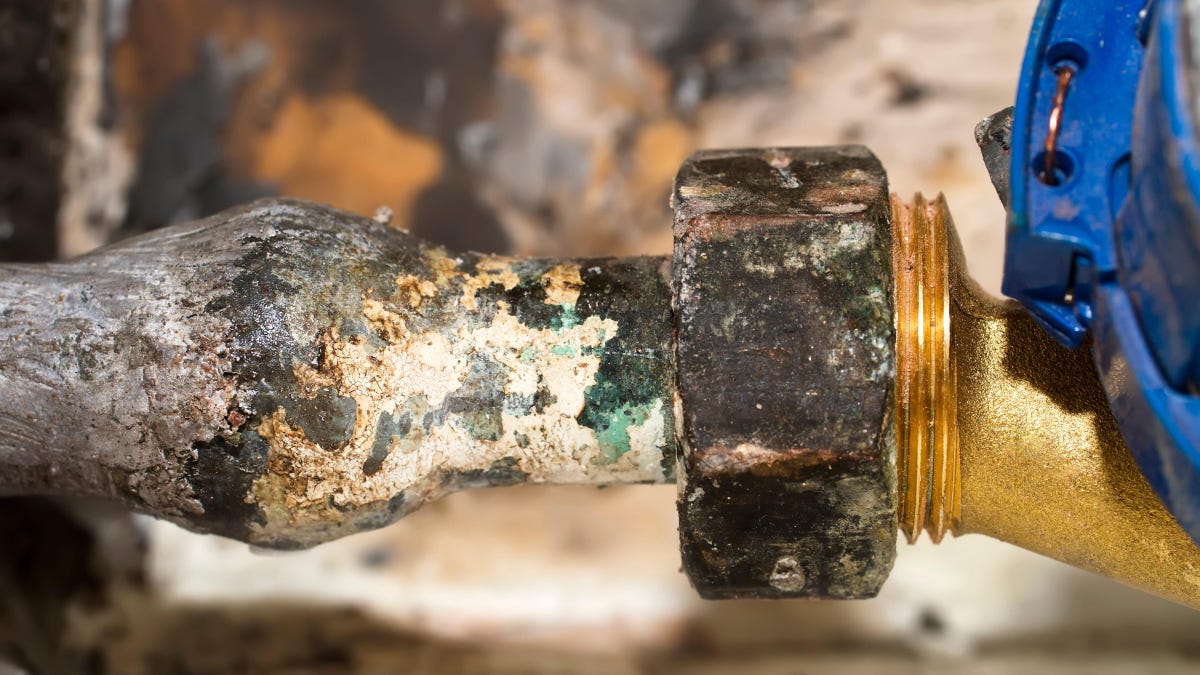[ad_1]
Although the law banning the installation of lead pipes in the United States took effect in 1988, that still leaves many homes across the country with plumbing that may contain lead. So, how can you determine if yours is one of them? Here’s what to know about lead pipes, and how to tell if your home has them.
Why are lead pipes dangerous?
For those with city water, their water service line is the pipe that brings water from the water main (much larger pipes which typically run under the street) into their home.
Although multiple components of a household’s plumbing—including faucets, fittings, and solder—may contain some amount of lead, water service lines made from lead are most responsible for the naturally occurring metal ending up in a household’s drinking water, according to the Natural Resources Defense Council (NRDC).
When were lead pipes banned in the U.S.?
Before we get into the test, let’s talk about some key dates. In 1986, Congress amended the Safe Water Drinking Act to prohibit the use of lead pipes when repairing or installing any public water system, or any plumbing facilities providing water for human consumption.
The law took effect in June 1988, so if your home was built after that with a new water service line, you’re probably in the clear. If your home was built and/or connected to the city’s water main before 1988, your pipes may contain lead—though that’s not a guarantee, as they may have been replaced since then, or another type of pipe could have been used initially.
How to tell if you have lead pipes
Most household water service lines are made out of lead, copper, galvanized steel, or plastic. Here’s how to determine which kind you have:
Find your water service line
The water service line is the point of entry for water into a home, typically located in the basement or a crawl space, and leading into an inlet valve and the water meter. Configurations of this setup can vary, but here are two visuals that might help:

And:

Do the scratch and stick test
Once you’ve located your water service line, look at it. If it’s clearly plastic, then you’ve found your answer—no need to continue. But if it’s some type of metal, grab a screwdriver (or something similar) and a magnet (one off your fridge is fine).
Use the screwdriver to scratch through any dirt or corrosion that may have built up on the pipe. Observe the color of the exposed part of the pipe, and see if the magnet sticks. Here’s what the results mean:
- Lead: Pipe was soft and easy to scrape; the scraped area is shiny and silver; the magnet doesn’t stick to the pipe
- Galvanized steel: Scraped area is a dull gray; the magnet sticks to the pipe
- Copper: Scraped area is the color of a penny; the magnet doesn’t stick
What to do if your water service line is lead
If you discover that your water service line is made of lead, snap a photo of it (with the magnet sticking to the pipe), and send it to your city or town’s water department, or whichever body handles water in your community (which may be the department of health in areas without city water). They’ll likely send an expert to verify your results, then add you to their list of homes that need replacement service lines.
Your water or health department will likely also provide you with tips for staying as safe as possible while waiting for a new water service line. Either way, here are some pointers from the Environmental Protection Agency.
[ad_2]
Source link
